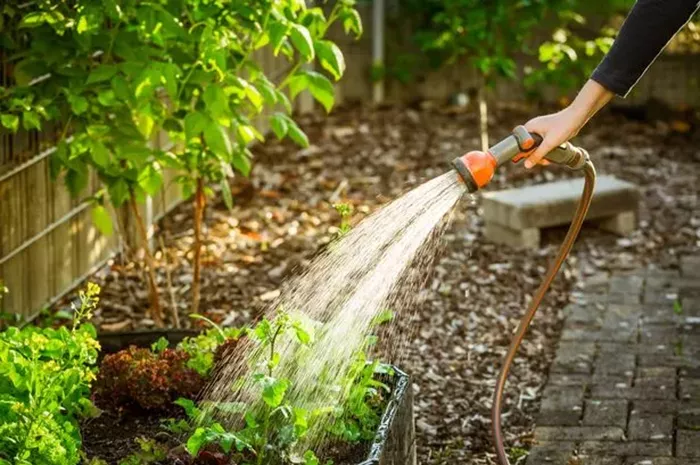As summer temperatures begin to climb, many British gardeners are reaching for their watering cans more often. But experts are now warning that watering your garden at the wrong time of day could be doing more harm than good.
According to the Met Office, the UK is twice as likely to experience a hot summer in 2025 compared to previous years. While the sunshine is helping flowers bloom, it’s also drying out the soil faster—making smart watering habits more important than ever.
Gardening expert Chris Cooper from Hayter is urging gardeners to think carefully about when they water their plants. “If you’re experiencing a dry summer where you are, watering is crucial,” he says. “But it’s easy to go overboard and end up overwatering.”
Why Timing Matters
Watering in the middle of the day, especially during hot weather, can be ineffective. Afternoon temperatures often cause water to evaporate before it reaches the plant’s roots. This leaves plants thirsty, even if they look like they’ve been watered.
Trying to make up for that by adding more water can backfire. Overwatering prevents roots from absorbing oxygen and leads to problems like root rot, yellowing leaves, and fungal diseases. In some cases, it can even kill the plant.
Morning and Evening Are Best
To avoid these problems, Cooper recommends watering early in the morning or late in the evening. These cooler times allow water to soak into the soil before the sun can dry it up. This gives your plants a better chance to stay hydrated throughout the day.
He also stresses the importance of targeting the base of each plant. “That’s where the water needs to go—the roots,” he explains. Spraying water on leaves, especially during hot or sunny weather, can actually cause damage such as leaf scorch.
Some Plants Need Extra Care
Plants in containers, pots, and hanging baskets need special attention during hot weather. These plants don’t have access to groundwater, so they rely completely on the water you provide.
Because they dry out faster, they should be a top priority in your watering routine. Make sure you’re checking their soil daily and watering as needed—preferably in the morning or evening, not during peak heat.
Watch for Signs of Dehydration
Plants that aren’t getting enough water will usually let you know. Common signs include:
- Drooping or wilting leaves
- Brown edges or dry patches on leaves
- Slower growth
- Fewer flowers or fruits
If you see these symptoms, assess when and how you’ve been watering before reaching for more water.
Weeds Can Make It Worse
Another issue that becomes more serious in warm weather is the rapid growth of weeds. These unwanted plants compete with your garden for water and nutrients. If left unchecked, they can weaken your plants and slow down growth.
Cooper recommends pulling weeds as soon as you see them. “They’re much easier to remove when they’re small,” he explains. Plus, many types of weeds can be composted, making them useful rather than harmful.
Summary
With a hot summer predicted, smart watering is essential for keeping gardens healthy. Experts advise watering either early in the morning or late in the evening to avoid wasting water and harming your plants. Special care should be given to container plants, which are especially vulnerable in dry conditions. And don’t forget to keep an eye out for weeds, which can steal valuable moisture from your garden.
By following these simple tips, you can help your plants survive—and thrive—throughout the summer months.


